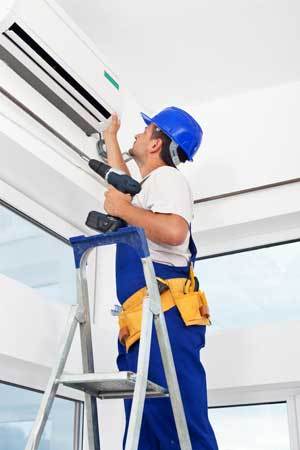Did you know that even though you've contracted out the job you can't contract out your responsibility for Health and Safety?

Continually investing in the fabric of the school is all part and parcel of creating the right learning environment for staff and pupils alike, this will invariably involve bringing contractors on site.
Contractors need to be treated differently than visitors, the nature of their work is more risky and usually involves power tools or hazardous chemicals. There’s a number of things a school can do when getting contractors on site to ensure they’re meeting their Health & Safety responsibilities and keeping everyone safe. Using the HSE’s best practice guidelines, SG World have compiled a handy checklist, with some simple pointers for choosing and managing contractors.
Insurance
Always make sure that you have a copy of the contractors Employer's Liability and Public Liability Insurance certificates so that you know they have appropriate cover if they have an accident on your premises.
Remember contractors aren't the same as visitors
Don't treat a contractor as a visitor; they introduce far more risk into your school. The very nature of their work means they can be be engaged in potentially hazardous work such as electrical, confined space, work at height etc and accessing areas that are usually out of bounds.
References
Don't take positive promotional statements from a website as a guarantee that the contractor has the necessary experience. Ask them for referrals and talk to other schools asking for recommendations.
Safeguarding DBS Checks
Make sure the contractors who are going to be working on site are DBS checked not just the person providing the quote.
Site Passes
Always issue daily site passes. This will help you comply with the HSE HSG159 guidance and allow you to keep your emergency evacuation register up- to-date. This log can also be handy when reviewing invoiced work.
Site Rules
Always inform contractors of your site rules when they arrive e.g. not to enter classrooms unless invited, never use children's toilet faculties, what to do if the alarm goes off. Do this every morning because if the job lasts more than a day different contractors may present.
Work Completion
Never let the contractor leave your site at the end of the day without being sure that they've done everything you require and have left the area in a safe and tidy condition, cordoned off if necessary.
Monitoring
Always allocate a staff member as a contact for the contractor. make sure they know who to talk to if they have an issue. Ask the staff member to check on the contractor at regular intervals to ensure work is progressing as expected.

Method Statement and Risk Assessments
Always ask to see a method statement. This will provide you with a step-by-step guide on how the contractor is going to do the job. It will demonstrate that they know what they are doing and also how seriously they take Health and Safety. Ensure the contractor also provides you with a risk assessment for the job - one specific to your project and environment. Risk assessments are a legal requirement under the Management of Health and Safety at Work Regulations 1999.
Qualifications
Make sure that the contractor you choose has the relevant qualifications for the job. Many trade federations and associations just require a fee in order to use their logo. Try and choose a contractor who has a qualification that is exam based.